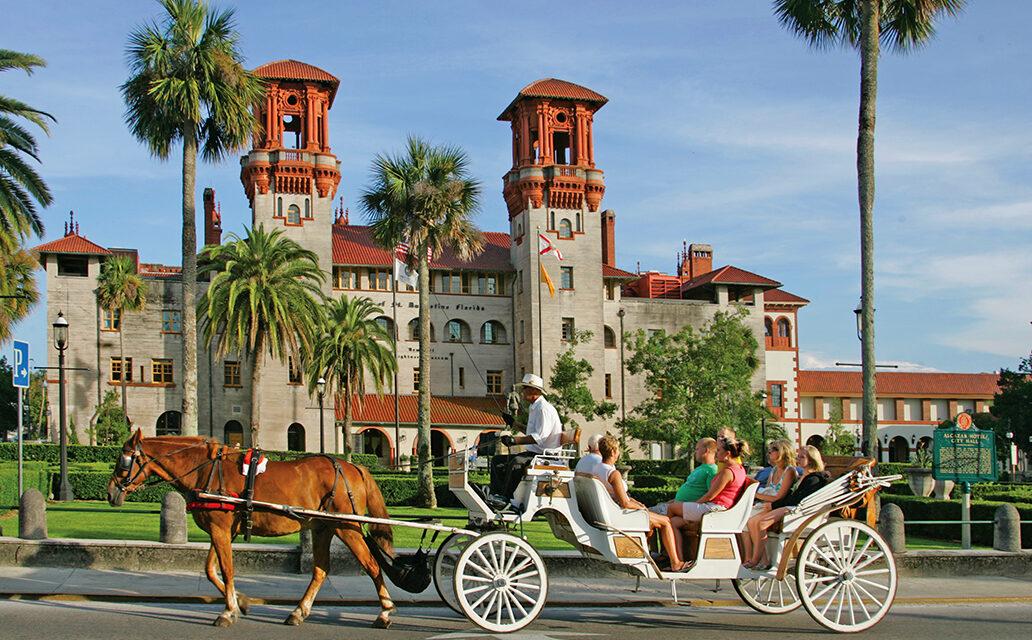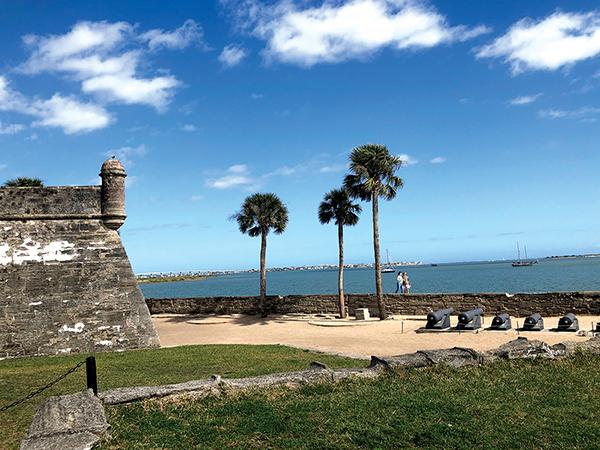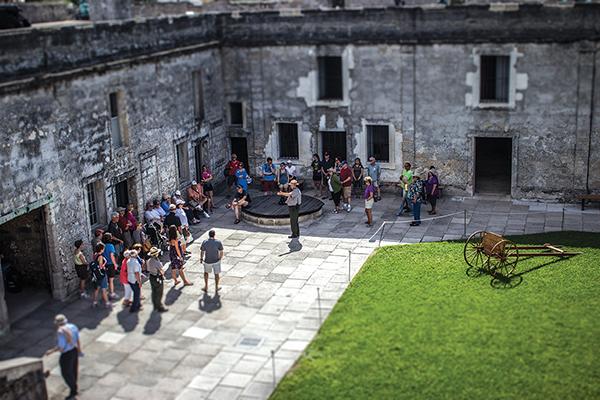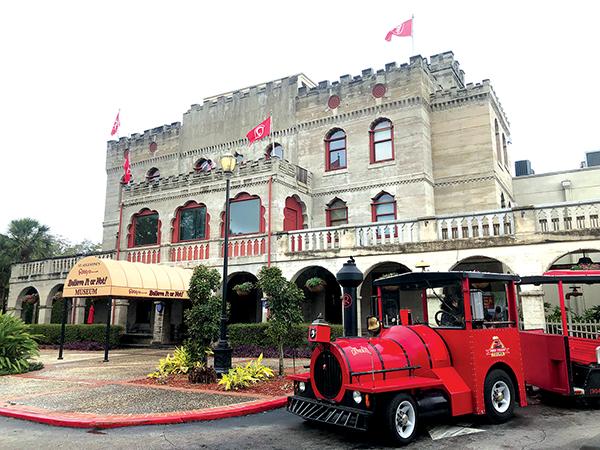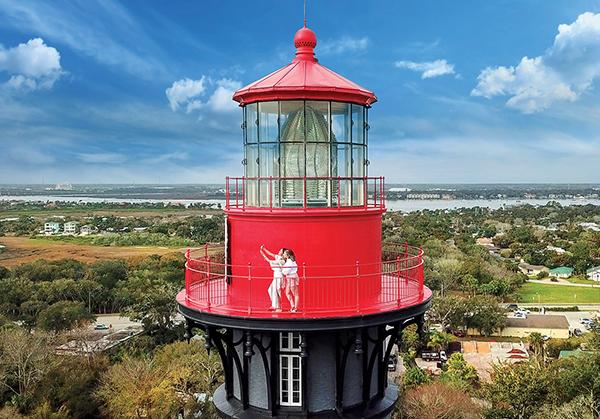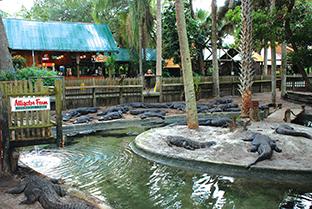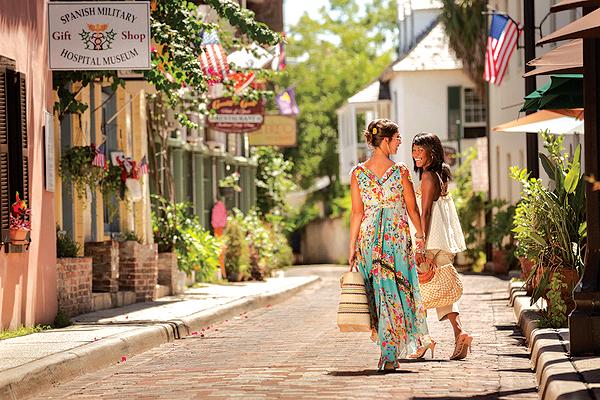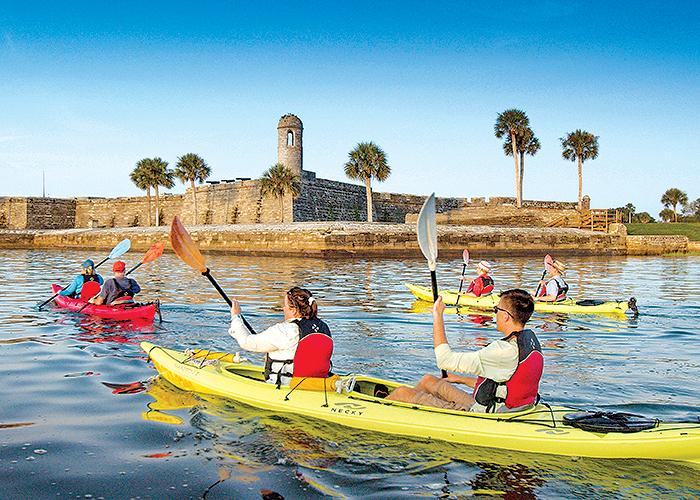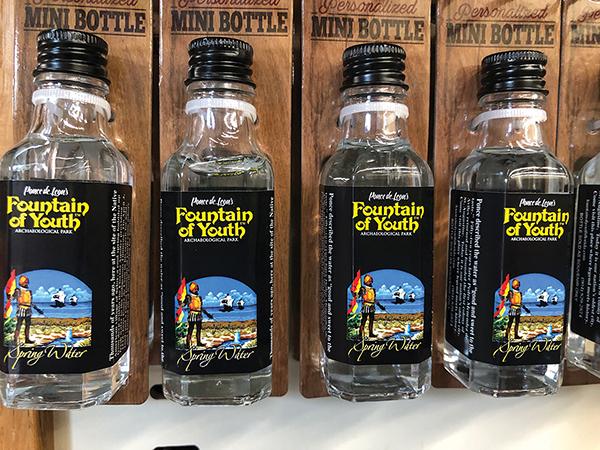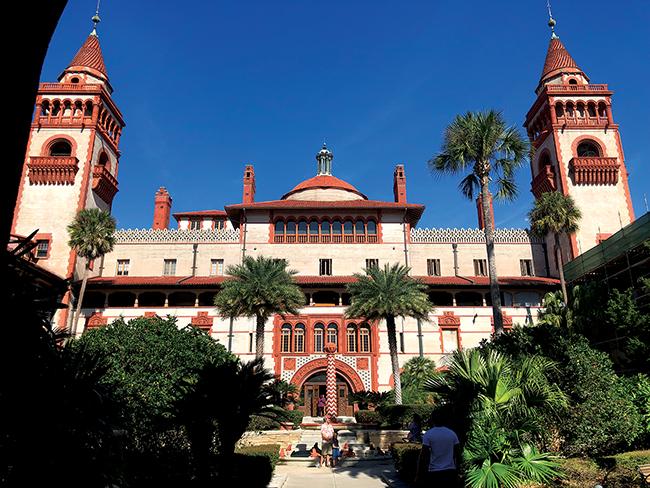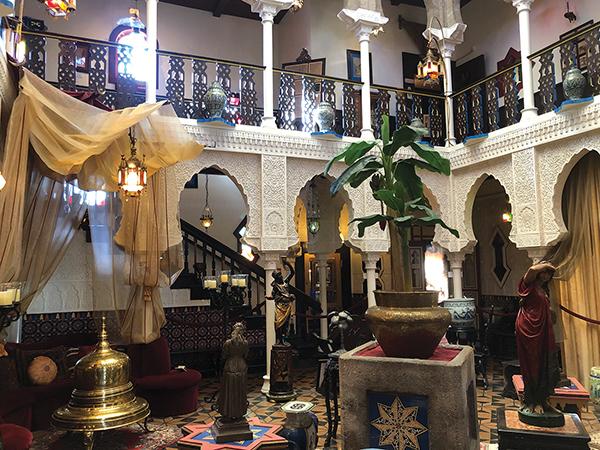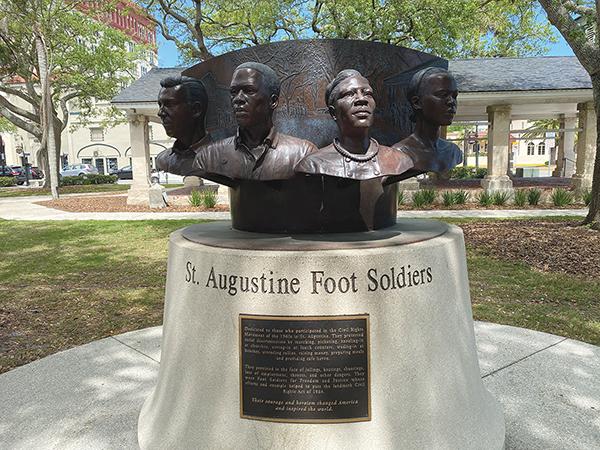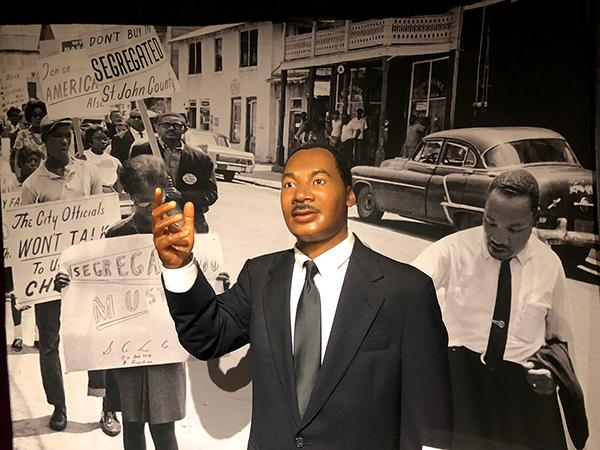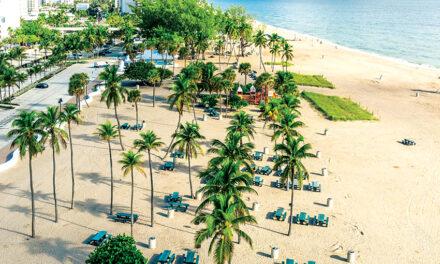USA
Peeling Back Layers of History in Florida’s Ancient City
“Old” is the key word in tourist-friendly St. Augustine
by Randy Mink
As someone who likes to commune with the past, I’m always on the lookout for places filled with historical attractions and a leisurely yesteryear feel that takes me back in time. Happily, I just discovered a Florida coastal city where travelers can soak up history as well as sun.
St. Augustine, founded in 1565 by adventurers from Spain, is the United States’ oldest European-settled city. Established much earlier than the better-known English colonies in Plymouth, Massachusetts, and Jamestown, Virginia, this compact town of 14,300 in northeastern Florida boasts more than 60 historic sites, many of them within easy walking distance of each other in a 144-square-block historic district. You’ve got Spanish and British colonial trappings, pirate lore, maritime heritage, Gilded Age stories, even 1960s civil rights history.
Exploring narrow, brick-paved streets in the highly walkable central core, you’ll come across the words “old,” “oldest” and “ancient” more than a few times. Attractions include the Oldest House Museum Complex (a Spanish colonial dwelling from the early 1700s) and Oldest Wooden School House. Perhaps you’ll pop into The Ancient Olive for olive oils and gourmet foods or Ancient City Brunch Bar for quiche and coffee. The oldest part of the well-preserved historic district is Old Town, a quiet neighborhood centered on Aviles Street, the oldest public street in the country.
Getting an overview of St. Augustine
The ideal way to get your bearings is a narrated 60-minute whirl on a Red Train Tours tram or the hop-on, hop-off tram operated by Old Town Trolley Tours, which makes a 90-minute circuit with 22 stops. Or digest small bites of history while sampling St. Augustine’s great culinary scene during a three-hour foodie adventure with The Tasting Tours. Horse-and-buggy jaunts also provide a good introduction to old St. Augustine.
To see the city from the water, consider an outing with St. Augustine Scenic Cruise, one of several operators offering boat tours of Florida’s Historic Coast. The Black Raven pirate ship does daily cruises geared to children, plus weekend evening trips for adults over 21.
A swashbuckling past
Castillo de San Marcos National Monument, the oldest structure in town, is the best-preserved example of a Spanish colonial fort in the continental U.S. and a prime spot to start your sightseeing. It reminded me of El Morro and San Cristobal fortresses in San Juan, Puerto Rico.
The imposing Castillo, with massive, diamond-shaped bastions at each corner and a moat on three sides, was built between 1672 and 1695 to protect St. Augustine from pirate raids and Spain’s major rival, Great Britain, during a time when the Florida-Georgia-Carolina coastline was an explosive international battleground. It was needed to assure safe passage of Spanish galleons laden with sugar, tobacco, gold, silver and other treasures from Spain’s possessions in the Caribbean. When Spain ceded Florida to Britain in 1763, the Castillo became Fort St. Mark, and as Fort Marion under American control was used as a military prison in the Seminole War of 1835-42, Civil War and Spanish-American War.
Castillo visitors enjoy clambering about the gun decks overlooking the city and Matanzas Bay, touring exhibit galleries in the casemates and listening to ranger talks. Cannon and musket demonstrations are given on weekends.
Those swashbuckling days also come alive at the St. Augustine Pirate & Treasure Museum, just across the road from the Castillo. Popular with kids and adults alike, the attraction counts more than 800 authentic pirate artifacts, including doubloons, pistols, tavern tankards, a genuine pirate treasure chest (said to be the only one left in the world) and one of only two remaining Jolly Roger flags that flew over ships. Exhibits shed light on torture techniques, famous pirate movies, and notorious real-life thieves like Captain Kidd, Blackbeard and Sir Francis Drake. Shiver me timbers!
Poking around St. George Street
The Colonial Quarter, a living history village with a working blacksmith shop, climbable watchtower and cannon firings, neighbors the Pirate Museum and backs up against pedestrianized St. George Street. Along this cozy retail corridor, tourists drift from shop to shop, hunting for souvenirs and stopping for tasty treats— everything from crepes and pretzels to popcorn and ice cream.
Some might cringe at the area’s commercialism, but I think it’s a lot of fun. I even liked venerable Potter’s Wax Museum on Orange Street. Housed in an 1886 drugstore, America’s first wax museum (established 1949) gives tourists a chance to pose with kings and queens of England, U.S. presidents, Frankenstein, Marc Antony and Cleopatra, Beethoven and Mozart, Shakespeare and Brittney Spears.
Columbia Restaurant, in the heart of St. George Street, offers one of St. Augustine’s premier dining experiences. Decorated with Spanish artwork, hand-painted tiles, wrought iron and black-and-white family photos, the Columbia, one of seven Florida locations owned a fifth-generation, family-owned company, specializes in Spanish/Cuban cuisine. Think tapas, Cuban sandwiches, Cuban black bean soup, gazpacho Andalucia and paella a la Valencia.
One can make a meal out of the Columbia’s signature salad. Tossed tableside with a garlic dressing (sold in the gift shop), Columbia’s Original “1905” Salad is a succulent symphony of iceberg lettuce, julienne of baked ham and Swiss cheese, tomatoes, olives, grated Romano cheese, olive oil and Worcestershire sauce. Warm Cuban bread with salted whipped butter provides the perfect complement. (The salad is named for the year the original Columbia, Florida’s oldest restaurant, opened in the Ybor City district of Tampa.)
Origins of St. Augustine
Fountain of Youth Archaeological Park occupies the approximate site where Spanish explorer Juan Ponce de Leon came ashore in 1513 and named it La Florida (Land of Flowers). It wasn’t until 1565 that the Spanish colony of St. Augustine was established there, then a Timucuan Indian settlement.
On landscaped grounds populated by free-roaming peacocks, park visitors see replicas of an Indian village and a 1587 mission church. In the 60-year-old springhouse, they drink from the source from which Ponce de Leon replenished his ship’s water supply, a spring marketed to suggest the youth-giving fountain that legend says he sought. The souvenir store sells bottles of spring water (just don’t expect eternal life).
Monuments to the Gilded Age
My favorite historical landmarks in St. Augustine are those from the Gilded Age, the glittering high-society days of the late 19th century. Members of the U.S. East Coast elite spent their winters at the palatial Hotel Ponce de Leon, a gem of Spanish Renaissance Revival architecture built in 1888 by oil tycoon and railway magnate Henry Flagler, the man often considered the Father of Modern Florida.
Tours of the former hotel, now the main building of Flagler College, are climaxed by a peek at the student dining hall, a cavernous room with wooden Corinthian columns, carved oak and mahogany, lavish murals, music balconies where bands once entertained hotel guests, and the world’s largest collection of Tiffany stained-glass windows—79 panes—in their original location. The building’s exterior, a mesmerizing medley of spires, turrets, towers, cupolas and red-tile roofs accented by the rotunda’s big fat dome, is equally as magnificent. What a place to go to college!
Across the street from the college stands another former Flagler-built playground for the rich, built in the same architectural style as the Ponce de Leon. The old Alcazar Hotel now houses City Hall and the Lightner Museum’s eclectic collection of antiques and curiosities, from vintage toasters to posh furnishings that once graced Chicago mansions. Guests of the Ponce de Leon walked over to the Alcazar to use the bowling alley, steam rooms and world’s largest indoor swimming pool. The pool’s deep end now is Cafe Alcazar, a grand setting for lunch.
To immerse themselves in the Gilded Age, present-day vacationers can stay overnight in a third Old World-inspired hotel sharing the intersection with the Lightner Museum and Flagler College. The 138-room Casa Monica Resort & Spa, rich with Moorish Revival and Spanish Baroque influences, opened in 1888 as the Casa Monica Hotel and was purchased just a few months later by Flagler. The hotel did not survive the Great Depression and sat abandoned before being transformed into the St. Johns County Courthouse in the late 1960s. After a new courthouse was built, the majestic property was once again empty for many years until entrepreneur Richard Kessler bought it in the late 1990s and turned it into a luxury hotel, one of 11 in the Kessler Collection portfolio. A member of both Marriott International’s Autograph Collection and Historic Hotels of America, the Casa Monica retains many of its original architectural flourishes, and its public spaces shine with museum-quality art.
The Casa Monica’s builder, Franklin W. Smith, lived down the street at Villa Zorayda, a Moorish Revival-style home meticulously fashioned after the Alhambra Palace in Granada, Spain. A quirky treasure house of art and antiques from Europe and the Middle East, Villa Zorayda Museum has been owned by the Mussallem family since the 1930s.
Smith also built St. Augustine’s Moorish-style Castle Warden, a former mansion and hotel that now showcases oddities at the original Ripley’s Believe It or Not!, a museum of the bizarre. If you want to see a live tarantula, a cannibal fork from the Fiji Islands or a Tibetan human skull drum, this place is for you. I learned something from the video “How to Swallow a Sword” but am still hesitant about guiding a long blade into my esophagus.
To truly experience St. Augustine’s Old World ambience, many travelers opt to stay in one of the historic district’s 30-plus bed & breakfast inns. Exquisitely decorated, often with period antiques or reproductions, these gussied-up homes offer deluxe amenities, a gourmet breakfast and the personal touch of a friendly innkeeper.
Civil rights history and maritime lore
In a formerly African American neighborhood, the Lincolnville Museum and Cultural Center chronicles black history in St. Augustine, the scene of nationally televised civil rights demonstrations in 1964. A vintage television console shows news footage of the clashes with police. The fingerprint card of Dr. Martin Luther King Jr., who was arrested for unlawful assembly and civil disobedience, is on display, as is a section of a whites-only Woolworth’s lunch counter where college students in 1960 staged a sit-in after being denied service. In downtown’s Plaza de la Constitucion, the St. Augustine Foot Soldiers Monument, which includes a series of bronze tablets in the sidewalk, honors civil rights activists who endured beatings while marching peacefully.
A short drive from downtown to Anastasia Island, via Lions Bridge, takes visitors to the St. Augustine Lighthouse & Maritime Museum. Painted with swirling black and white stripes and capped with a bright red lantern, the photogenic lighthouse, dating back to the 1870s, is still used as a navigational aid. It’s a spirally 219-step climb to the top.
In the former lighthouse keeper’s house, the exhibit “Shrimpin’ Ain’t Easy” looks at the local shrimping industry. I picked up a number of fun facts from the “Shrimp University” touchscreen. For example, did you know that eight of 10 shrimp sold in the U.S. today are farm-raised, mostly in Asia and South America?
Wild-caught shrimp, however, taste better, and many St. Augustine restaurants take pride in serving local catches. Among the best places for fresh seafood and other traditional Southern specialties are O’Steen’s and the New Orleans-style Harry’s Seafood Bar & Grille.
Anastasia Island is also a beach destination. Sun-seekers sink their toes into the white sands of Anastasia State Park, St. Augustine Beach and Crescent Beach.
The barrier island’s St. Augustine Alligator Farm, a zoo popular with families, features 24 species of crocodilians from around the world, not to mention lemurs, snakes and exotic birds. Guests get a look at rare albino alligators, marvel at storks and vultures with enormous wingspans, and have a chance to feed alligators and two-toed sloths. The theater hosts wildlife shows.
Offering layers of history, along with on-the-water relaxation and lighter diversions that fuel a well-oiled tourism machine, St. Augustine has a personality all its own. For those looking for something new, the ancient city delivers. It’s certainly Old Florida—but not the same old Florida.

